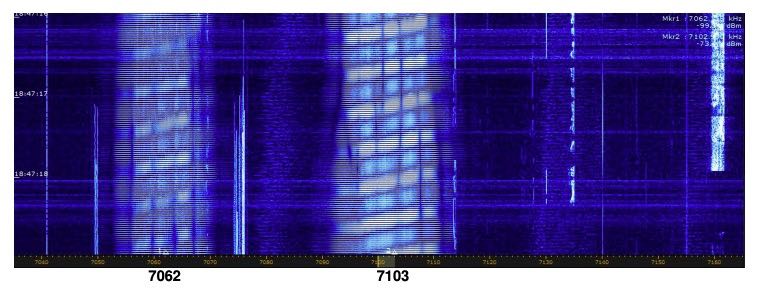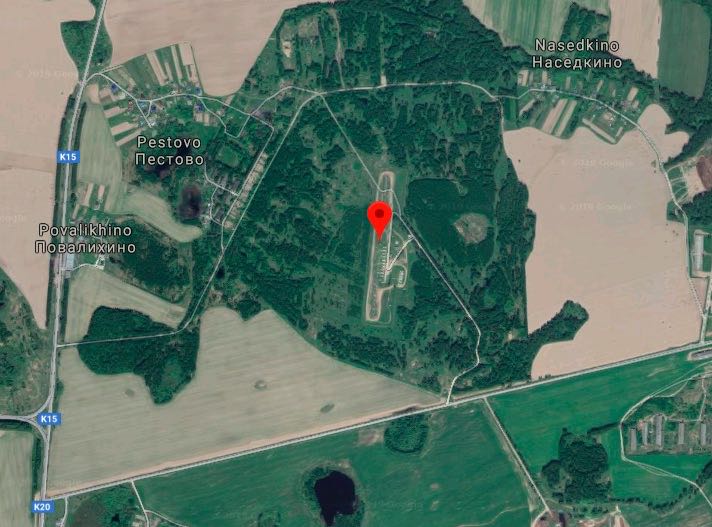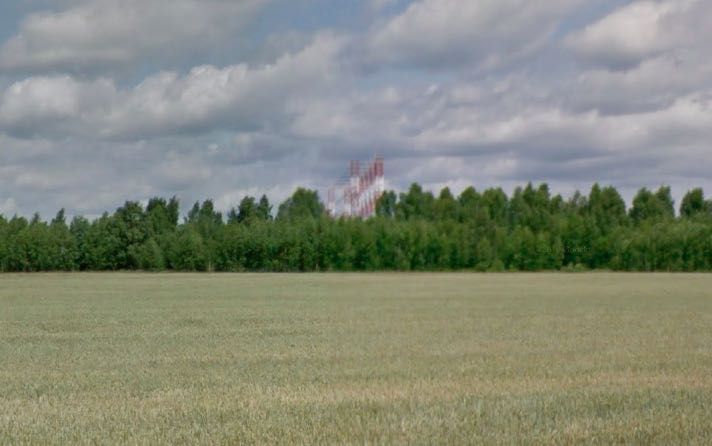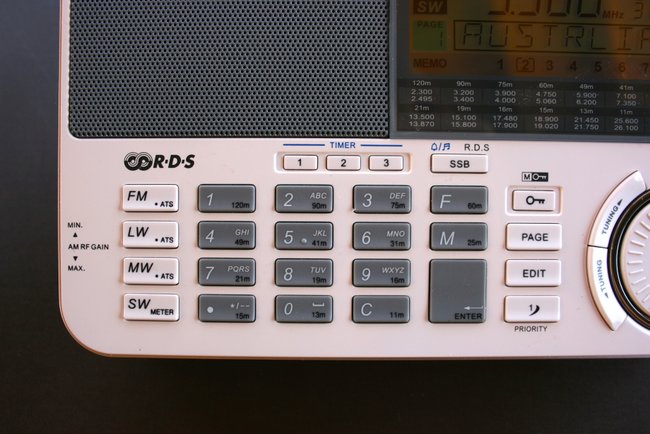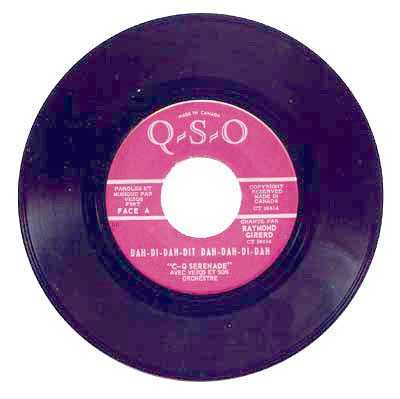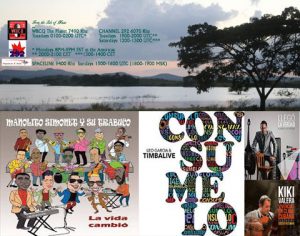Contayner Over-The-Horizon Radar site polluting the HF spectrum
Many thanks to SWLing Post contributor, Paul Evans, who writes:
The news from IARU Region 1 observer reports is all over the radio internet (including news sites and other blogs), but the extent of this [Russian] OTHR is grim. [Click here to read a recent ARRL News post.]
It is also entering service on a full-time basis, along with, potentially, a similar Chinese system.
Yes, it has been in testing for many years but is approaching multiple site use, soon. As the sunspot cycle comes back they may prove to be very limiting.
The antenna picture (for the transmit site) is impressive:
https://qrznow.com/russian-oth-radar-now-reported-to-be-everywhere/(although I think that is of the old Woodpecker site, the Google Maps street view image looks somewhat different, see below).
However, it’s not so huge that it really stands out. It can be seen here:
in satellite view and can even be seen in street view here:
Note that the magic number in the phased arrays seems to be 9.
Rather worrying is that the UK continues to run, over many years now, OTHR from sovereign bases (ZC4) in Cyprus rather obviously aimed at use in Syria and Libya for use with the RAF and for Russian air space. It too can be seen on the salt marshes in the south of the island. As an active system it seems to be rather more cloaked than the Russian system, although there are some 360 degree images in Google Maps that show the towers. This was extremely annoying on the bands when the last solar cycle was near maximum from Bermuda because it was right in the main lobe when a Yagi was pointed towards Europe and was very loud. It was considerably narrower than the Russian system but occupied a solid chunk of band.
Paul, thank you for bringing this to our attention. I have seen chatter about the QRM this particular Russian OTH Radar site has created, but it seems other countries will soon be joining the OTHR QRM scene as well.
Do you enjoy the SWLing Post?
Please consider supporting us via Patreon or our Coffee Fund!
Your support makes articles like this one possible. Thank you!
Sangean ATS-909X sticky keys?
Many thanks to SWLing Post contributor, Mark Fahey, who left the following comment on our PL-880 review:
I’m reading this old post as I am a new user of the PL-880. I have it as my bedside and coffee table receiver in my house up in the Indonesian jungle.
I love it! Wished I purchased it months ago.
Until the PL-880 arrived I was using an ATS-909X up here – and seeing Thomas mention it here I thought I would ask about it.
I have owned 3 x ATS-909X over the years, two white and my most recent (about 2 years ago) is the black model. Every single one of them has the most frustrating key not functioning as you would expect bug. It like the keys are “sticking”, it’s not a mechanical problem, but something with the keyboard electronics. The 1st one I brought when the ATS-909X was basically unusable due the keyboard. The later purchases somewhat better, and the last Black one the best of the bunch with a software version that was supposed to fix the problem. All that said even the Black one is pretty crappy with unresponsive keys (unless you press hard and slowly – ie not rapid and fast sequences of key pressing).
Am I just suffering the effects of bad karma, or is everyone’s experience of the ATS-909X the same.
I’m so pleased I’m now using the PL-880. No problems, no crappy keyboard, just a great experience!
Cheers,
Mark
I’m glad you’re enjoying the PL-880, Mark. You’re right: it’s a brilliant portable.
Post readers: Have other ATS-909X owners experienced this problem with unresponsive keys? Please comment!
And Mark, we’re overdue an update on your Radio Seribatu stations!
New Zealand gov’t might replace RNZ & TVNZ with new public broadcaster
 (Source: Radio New Zealand)
(Source: Radio New Zealand)
The fate of RNZ and TVNZ may soon be in the hands of Cabinet ministers, with a proposal to disestablish both broadcasters and create an entirely new public media entity.
The coalition government has been grappling with what to do with public broadcasting in New Zealand, and now there’s a greater sense of urgency with the media industry under real financial threat.
Labour campaigned on RNZ+ with annual funding of $38 million in 2017, but that was canned after the resignation of Clare Curran as Broadcasting Minister.
The portfolio was handed to Kris Faafoi, who has signalled a different approach to public broadcasting.
An advisory group, with representatives from both media companies and a range of public service agencies, was set up to look at future funding options.
RNZ understands there were three options: merge the RNZ and TVNZ newsrooms, put more money into New Zealand On Air, or the third, preferred option now heading for Cabinet – most likely in early December.
The advisory group concluded the status quo was “unsustainable” and “collectively recommended the government agree to disestablish TVNZ and RNZ and to establish a new public media entity”.[…]
CQ Serenade – Very Cool!
This link was forwarded to our Amateur Radio Club by a member (who is quite proficient in Morse code, unlike me!) and I just had to share it with Thomas and the SWLing gang!
https://www.on6zq.be/w/index.php/Audio/CqSerenadeFr
There is both a French version and an English version of the song, so enjoy them both!
Robert Gulley, K4PKM (formerly AK3Q), is the author of this post and a regular contributor to the SWLing Post. Robert also blogs at All Things Radio.
BBC World Service documentary about Radio Berlin International Service to Africa
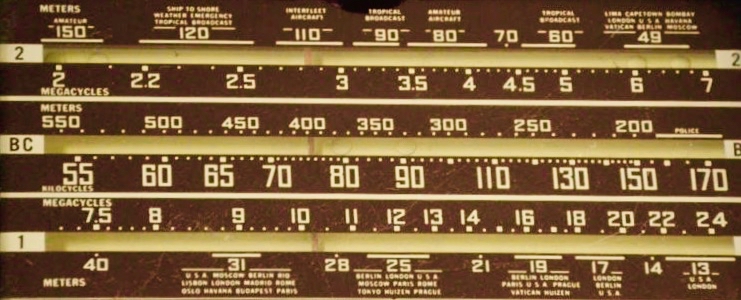
Many thanks to SWLing Post contributors Kris and Ed who both note a fascinating BBC World Service documentary. Ed writes:
Hey Thomas,
SWLing Post readers will surely enjoy this brilliant BBC World Service documentary about Radio Berlin International Service to Africa. “Comrade Africa” offers a 53-minute fascinating blast from the cold-war past with many nostalgic RBI airchecks and programming analyses.
-Ed
https://www.bbc.co.uk/programmes/w3ct036t
Comrade Africa
The Documentary
How Communist East Germany tried to influence Africa via radio, during the Cold War. The West often saw the GDR as a grim and grey place, so it’s something of a surprise to find a radio station based in East Berlin playing swinging African tunes. Yet Radio Berlin International (RBI), the ‘voice of the German Democratic Republic’, made it all happen over the many years it broadcast to Africa. It built on the little known strong bonds between East Germany and several large states in Africa such as Tanzania and Angola during the 1960s, ‘70s and ‘80s.
Dr Emily Oliver, a historian of postwar Germany from Warwick University, finds out why multicultural Radio Berlin International was a special place within East Germany and what happened behind the scenes. The government set tight reporting restrictions on output. Staff faced the dilemma of following the rules while competing with the likes of the BBC World Service. They were also conscious of the output of the station’s main direct rival, West Germany’s Deutsche Welle, which portrayed the world quite differently. And how did RBI employees coming from nations like Tanzania cope with working for the oppressive East German regime?
Emily hears how RBI appealed to listeners in Africa, reveals how East Germans and Angolans made friends over coffee and tractors, and discovers how the Cold War played out in Africa at a time when many African states were fighting for independence.
Presenter: Emily Oliver
Producer: Sabine Schereck
Researcher: Balthazar Kitundu
Editor: Hugh Levinson
Readers: Neil McCaul, Leone Ouedraogo (podcast only), Ian Conningham and Adam Courting
The Two Comrades: Will Kirk and Greg Jones
FTIOM & UBMP, November 17-23
From the Isle of Music, November 17-23:
This week we present a Cuban dance party including some recent Timba releases.
The broadcasts take place:
1. For Eastern Europe but audible well beyond the target area in most of the Eastern Hemisphere (including parts of East Asia and Oceania) with 100Kw, Sunday 1500-1600 UTC on SpaceLine, 9400 KHz, from Sofia, Bulgaria (1800-1900 MSK)
If you don’t have a shortwave radio or are out of range, you can listen live to an uplink from a listening radio in the Netherlands during the broadcast at
http://websdr.ewi.utwente.nl:8901/?tune=9400am
2. For the Americas and parts of Europe, Tuesday 0100-0200 UTC (New UTC) on WBCQ, 7490 KHz from Monticello, ME, USA (Monday 8-9PM EST in the US).
If you don’t have a shortwave or are out of range, you can listen to a live stream from the WBCQ website here (choose 7490) http://www.wbcq.com/?page_id=7
3 & 4. For Europe and sometimes beyond, Tuesday 1900-2000 UTC and Saturday 1200-1300 UTC on Channel 292, 6070 KHz from Rohrbach, Germany.
If you don’t have a shortwave radio or are out of range, you can listen live to an uplink from a listening radio in Europe.
Visit our Facebook page at https://www.facebook.com/fromtheisleofmusic
Uncle Bill’s Melting Pot, November 17 and 19:
Episode 139 features parody and comedy songs.
The transmissions take place:
1.Sundays 2300-2330 UTC (6:00PM -6:30PM Eastern US) on WBCQ The Planet 7490 KHz from the US to the Americas and parts of Europe
If you don’t have a shortwave or are out of range, you can listen to a live stream from the WBCQ website here (choose 7490) http://www.wbcq.com/?page_id=7
2. Tuesdays 2000-2030 UTC on Channel 292, 6070 KHz from Rohrbach, Germany for Europe.
If you don’t have a shortwave radio or are out of range, you can listen live to an uplink from different web SDRs in Europe.
Visit our Facebook Page at https://www.facebook.com/UncleBillsMeltingPot


